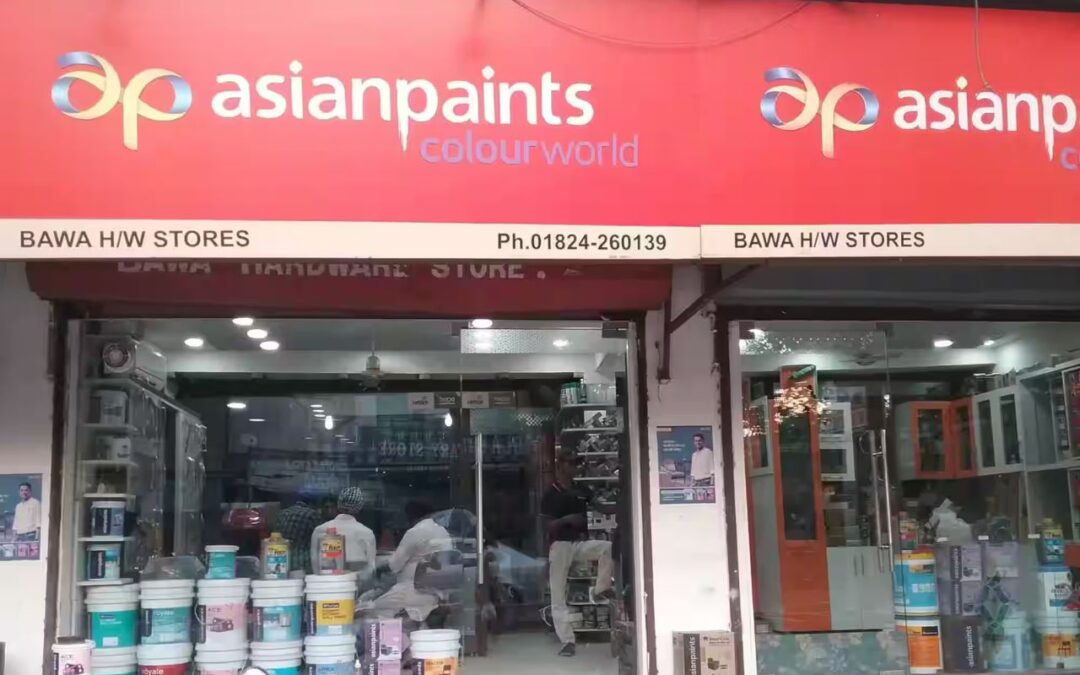A visionary Indian enterprise revolutionized its industry in the 1970s by adopting supercomputing for data-driven forecasting, optimizing production, and streamlining logistics. Its early technological foresight enabled unmatched market efficiency, customer insight, and long-term leadership in a highly competitive and evolving sector.
In the 1970s, a pioneering Indian company embraced technology long before digital transformation became a trend. Asian Paints used an IBM supercomputer to forecast regional and seasonal paint demand, enabling efficient supply chain management and cost reduction.
This early adoption of data-driven decision-making helped it gain a dominant edge and redefine India’s corporate innovation landscape.
Tech-Driven Transformation
Asian Paints’ remarkable journey from Rs 13.04 in 1995 to Rs 2,916 in 2025 reflects a staggering 22,254.29 percent rise, underscoring its consistent growth and market leadership. With a market capitalization of Rs 2.7 lakh crore, the company’s long-term value creation highlights strong fundamentals, brand dominance, and strategic innovation in India’s paints industry.
In 1970, Asian Paints made a bold move by investing Rs 8 crore in India’s first supercomputer, the CDC 6600, with an accuracy rate of 90-97% in forecasting paint sales features such as colour, quantity, and tin size, even ahead of ISRO. This visionary step allowed the company to harness advanced data analytics for demand forecasting and supply optimization, giving it a decisive edge and setting a benchmark for tech-driven business innovation in India.
Data-Driven Revolution
By leveraging a supercomputer to analyze consumer behavior, regional trends, and historical sales, Asian Paints gained unmatched insight into customer preferences. This data-driven precision enabled the company to forecast demand for specific colours, sizes, and paint bases with high accuracy, allowing it to customise products for diverse markets and maintain a decisive competitive advantage across India.
Moreover, Asian Paints transformed its logistics and dealer operations. The supercomputer enabled real-time tracking, quick identification of inefficiencies, and direct engagement with more than 70,000 dealers. This tech-driven model improved inventory turnover, boosted delivery frequency to several times a day, reduced dependency on intermediaries, and significantly enhanced margins and customer satisfaction across India.
Asian Paints leads India’s paint market with a significant share of around 52-55% in 2025, though a decline from over 59% in recent years due to rising competition from players like Grasim (Birla Opus) and Kansai Nerolac. It dominates decorative paints with roughly 60% market share and remains the key driver in India’s rapidly growing ₹1 lakh crore paint industry.
Conclusion
Asian Paints’ early embrace of supercomputing in the 1970s redefined how Indian companies used technology for business intelligence. Its foresight in data analytics, supply chain precision, and dealer integration built decades of dominance. Even as competition intensifies, Asian Paints continues to exemplify innovation-led growth, blending technological foresight with strong execution to sustain its market leadership.
Written by Abhishek Singh
Disclaimer

The views and investment tips expressed by investment experts/broking houses/rating agencies on tradebrains.in are their own, and not that of the website or its management. Investing in equities poses a risk of financial losses. Investors must therefore exercise due caution while investing or trading in stocks. Trade Brains Technologies Private Limited or the author are not liable for any losses caused as a result of the decision based on this article. Please consult your investment advisor before investing.


